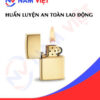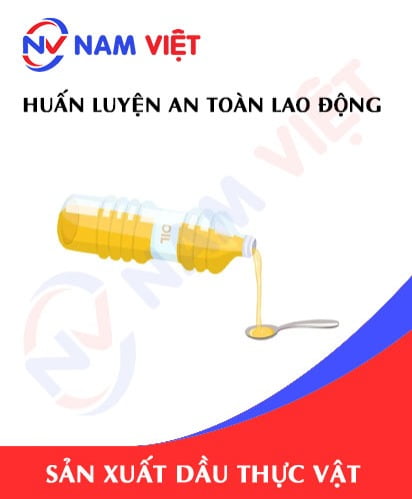Occupational Safety Training for Currency Manufacturing
99,000 ₫
Note: The above price is calculated for one person, and the price may fluctuate depending on the number of trainees participating in the course and market movements. For more accurate pricing support, please refer to the pricing table or contact our consulting staff directly.
Occupational safety is an important issue in factories manufacturing currency and must be addressed promptly to ensure the health and safety of workers while enhancing the reputation of businesses. The Occupational Safety Training course is one of the effective solutions to increase awareness of how to prevent workplace accidents for workers involved in currency manufacturing.
Table of Contents
Toggle1. Overview of Currency
a. What is currency?
- Currency is an abstract quantity used as a medium of exchange in economic transactions. It has value and is accepted as a form of payment for goods or services. Currency can include paper currency such as cash, or non-cash payment methods like credit cards, electronic transfers, or cryptocurrencies like Bitcoin.
- Currency arises from the need to exchange goods and services in society. It helps simplify transactions and creates a more efficient economic system. Currency is also used as a unit of measurement for the value of goods and services, helping make decisions on investment, manufacturing, and consumption.
- However, currency can also lead to economic and social issues, including inflation and government monetary policy. Therefore, managing and using currency must be done carefully and effectively to ensure sustainable economic and social development.

b. Types of currency manufacturing machinery
Currency manufacturing machinery refers to equipment used to produce currency, including paper currency, coins, and other types of currency. Common currency manufacturing machines include:
- Currency printing machines: Machines that use printing technology to produce paper currency and checks. Currency printing machines are designed to print different currency designs with security features to prevent counterfeiting.
- Currency packaging machines: Machines used to package coins and paper currency into bundles or boxes for delivery to banks or issuing authorities. They ensure accuracy and increase productivity in the packaging process.
- Coin stamping machines: Machines used to stamp coins into the desired shape and size. They help improve productivity and ensure precision in coin manufacturing.
- Coin minting machines: Machines used to mint various types of coins, including silver, gold, and other precious metals. These machines use different technologies to produce coins with varying shapes, sizes, and weights.
- Stamping and logo printing machines: Machines used to produce stamps, labels, and logos on currency. They ensure precision and durability of stamps and logos, helping prevent counterfeiting.
All currency manufacturing machines are equipped with high-security features to prevent counterfeiting and ensure accuracy in currency circulation.

c. Currency manufacturing enterprises in Vietnam
In Vietnam, the Currency Printing Department under the State Bank of Vietnam is responsible for producing paper currency and other financial instruments such as checks, payment vouchers, receipts, etc., ensuring high-security standards to prevent counterfeiting.
d. Specific jobs in a currency manufacturing factory
Group 1
- Executive director, deputy executive director, and department heads in a currency manufacturing factory.
Group 2
- Safety officers: manage safety in the factory, design safety procedures, supervise and enforce employee compliance with safe work processes.
Group 3
- Die manufacturing: Dies are used to shape coins and are a critical step in producing accurate and aesthetically pleasing currency. Technicians are responsible for designing and manufacturing dies.
- Printing and paper currency production: This includes selecting materials, checking the precision and clarity of printed products, and producing paper currency with high accuracy.
- Coin production: Coin manufacturing tasks include cutting, stamping, and packaging. Staff must ensure precision and clarity of coins.
- Inspection and maintenance: Employees in inspection and maintenance check and assess the accuracy and reliability of currency products while maintaining machinery and equipment.
Group 4
- Office work, service, sales, marketing.
- Production management, quality management, human resources management, materials management, financial accounting management.
- Design and printing: Staff are responsible for designing and printing currency designs, ensuring precision and clarity of paper currency and coins.

2. Overview of Occupational Safety Training in Currency Manufacturing
In this article, we focus on issues concerning Group 3 because Group 3 directly participates in the manufacturing process and faces the highest occupational safety risks. For other groups, see here.
a. What is Group 3 occupational safety training?
- Group 3 occupational safety training consists of sessions that provide workers with awareness on how to prevent occupational accidents.
- The training helps workers recognize and avoid hazards, reducing the risk of workplace accidents during manufacturing.
REGISTER FOR OCCUPATIONAL SAFETY TRAINING SERVICE
b. Training duration
Initial occupational safety training
- Total training hours must be at least 24 hours, including assessment time.
- 8 hours of theory on policies and labor safety laws
- 8 hours of theory on basic occupational safety knowledge
- 4 hours of theory on specialized training content
- 2 hours of practical exercises on specialized training content
- 2 hours of theoretical examination at the end of training
The safety training center will divide the time into multiple sessions depending on workers’ schedules. Usually, there are 6 sessions over 3 days, provided the factory arranges continuous learning time.
Periodic occupational safety training
- Before the occupational safety card expires, workers wishing to renew must undergo periodic occupational safety training, with periodic training duration at least 50% of the initial training duration.
Explanation: Total periodic training must be at least 12 hours, including assessment time. After completing the periodic training and passing the test, workers will receive a renewed occupational safety card.
c. Training content
| No. | TRAINING CONTENT | TRAINING HOURS | |||
| Total | Including | ||||
| Theory | Practice | Examination | |||
| I | Policies and labor safety laws | 8 | 8 | 0 | 0 |
| 1 | Overview of legal documents on occupational safety. | 6 | 6 | ||
| 2 | Standards and technical regulations for occupational safety. | 1 | 1 | ||
| 3 | Specific regulations from state authorities on occupational safety when constructing, expanding, or renovating facilities for manufacturing, using, storing, and inspecting machines, equipment, materials, and hazardous substances. | 1 | 1 | ||
| II | Basic occupational safety knowledge | 8 | 8 | 0 | 0 |
| 1 | Basic knowledge of hazardous and harmful factors at the workplace. | 4 | 4 | ||
| 2 | Methods to improve working conditions. | 1 | 1 | ||
| 3 | Safety culture in manufacturing and business. | 1 | 1 | ||
| 4 | Rights and responsibilities of employers and employees; policies on occupational safety; roles of safety and hygiene staff. | 1 | 1 | ||
| 5 | Safety regulations, signage, instructions, use of safety equipment, personal protective equipment; accident first aid and occupational disease prevention skills. | 1 | 1 | ||
| III | Specialized training content | 6 | 4 | 2 | 0 |
| Comprehensive knowledge of machines, equipment, and hazardous substances; risk assessment and management for occupational safety; safe work procedures with machines, equipment, and hazardous substances. | 6 | 4 | 2 | ||
| IV | Final occupational safety assessment | 2 | 2 | 0 | 0 |
| Total | 24 | 22 | 2 | ||
See more training content of all 6 groups
d. Occupational safety card
After completing the occupational safety training and passing the test, workers will receive an occupational safety card (commonly called a Group 3 safety certificate).
The Group 3 card includes details such as full name, date of birth, job, and specific working environment. It also shows training duration, a red stamp, and a signature confirming training completion.
According to regulations in Clause 2 of Article 24, Decree 44/2016/ND-CP, there are two cases:
- If the employer and employee have a labor contract, the employer must sign, stamp, and validate the safety card for Group 3 workers after training and passing the test.
- If the worker is freelance or seasonal without a labor contract, the training unit must sign, stamp, and validate the safety card after training and passing the test.

3. Identifying Hazards Affecting Workers in Currency Manufacturing
Currency manufacturing requires strict industrial processes and high-tech equipment, so occupational safety risks may occur during the production of currency. Below are some potential hazards that workers in a currency factory may face:
- Fire and explosion hazards: Equipment used for producing banknotes, coins, etc., involves many chemicals, electricity, and high temperatures, so fire and explosion risks may occur. Workers must be trained in occupational safety and comply with safety regulations to ensure their own safety and that of those around them.
- Accident hazards: Workers may be injured when operating production equipment, such as cutting tools or coin presses. Therefore, equipment must be regularly inspected and maintained to ensure worker safety.
- Health hazards: Chemicals and dust during currency manufacturing can be harmful to workers’ health, causing headaches, breathing difficulties, etc. Currency production staff must be provided with adequate personal protective equipment and trained in its use.
- Infection hazards: During currency manufacturing, there is a risk of contamination from banknotes, coins, or other production equipment. Workers must follow personal hygiene regulations to ensure their health and that of others.
- Electrical hazards: If electrical equipment in the factory is not regularly maintained, not sufficiently insulated, or not waterproofed, it may cause electric shock hazards for workers during production.

4. Common Occupational Accidents for Workers in Currency Manufacturing
During currency manufacturing, workers may face various types of occupational accidents. Below are some common accidents in the currency manufacturing sector:
- Machinery accidents: Currency production staff often work with various machines, such as coin presses, paper cutters, etc. If safety regulations are not fully followed during machine operation, accidents causing injury or death may occur.
- Chemical accidents: Workers in currency factories may also experience accidents due to chemical exposure, such as chemical poisoning, allergic reactions, or fire/explosion from flammable chemicals.
- Tool-related accidents: During currency manufacturing, workers often use various tools like knives, scissors, hammers, etc. Improper use or poor management can lead to injury accidents.
- Electrical accidents: Currency manufacturing often involves electrical devices such as machinery and lighting systems. If these are not properly checked and maintained, electrical accidents such as shocks may occur.
- Traffic accidents: Transporting currency products requires vehicles such as trucks and ambulances. If traffic safety rules are not followed, accidents may happen.

5. Safety Measures When Participating in Currency Manufacturing
To ensure safety during currency manufacturing, workers need to follow the following safety measures:
- Safety uniforms: Currency production staff must be equipped with full protective gear such as helmets, anti-slip shoes, jackets, and protective pants to protect their bodies while working.
- Follow safety procedures: Safety procedures and guidelines are designed to ensure the safety of currency production staff. Workers must be trained to understand and comply with these procedures.
- Use protective equipment: Protective equipment such as safety glasses, masks, gloves, and other protective clothing can be used to minimize risks during production.
- Check and maintain equipment: Currency production staff must inspect machines and equipment before use to ensure proper operation and prevent accidents.
- Proper tool usage: Use production tools such as knives, scissors, hammers, etc., correctly to avoid unnecessary accidents.
- Ensure electrical safety: Currency production staff must comply with electrical safety rules and maintain electrical equipment to minimize electrical accident risks.
- Participate in training: Attending occupational safety training programs equips currency production staff with the knowledge and skills to ensure safety at work.
- Report incidents: If any incidents occur, workers must report to management promptly to ensure safety for everyone.
- Regularly conduct occupational environment monitoring in factories, collect and analyze harmful factors, and adjust to reduce hazards to prevent occupational diseases.

6. Benefits of Occupational Safety Training for Currency Manufacturing
An Toan Nam Viet provides your business with the following benefits after completing occupational safety training courses in accordance with Decree 44/2016/NĐ – CP on occupational health and safety for companies and factories:
- Workers can recognize potential occupational hazards and take preventive measures to avoid accidents.
- Your business can establish risk prevention measures in production, operation, and maintenance processes.
- Reduce costs associated with safety incidents.
- Continuous production increases labor productivity and product quality.
- Compliance with occupational safety laws avoids legal risks.
- Enhances credibility and professionalism, elevating your company’s brand.
Nam Viet’s training courses are solutions to prevent external hazards from impacting individuals, helping them avoid injuries or even death.
REGISTER FOR OCCUPATIONAL SAFETY TRAINING SERVICE
7. Customer Feedback After Completing Occupational Safety Training for Currency Manufacturing
An Toan Nam Viet has years of experience accompanying many businesses in Vietnam, especially in the southern provinces. This responsibility is highly valuable, which is why Nam Viet emphasizes increasingly professional occupational safety training. Our growth is driven by positive feedback and suggestions from businesses. Below are some testimonials from our partners:
Hoa Dat Construction and Trading Joint Stock Company
“Nam Viet’s service greatly helped us simplify occupational safety and complete safety documentation. Their consulting team was enthusiastic and timely in responding to our questions. Five stars for Nam Viet.”
See more customer interviews after using the service from An Toan Nam Viet
8. An Toan Nam Viet’s Occupational Safety Training Capability
An Toan Nam Viet is a reputable and quality center for occupational safety training in Vietnam, conducting continuous training at factories, workshops, or construction sites nationwide (all 63 provinces in Vietnam).
REGISTER FOR OCCUPATIONAL SAFETY TRAINING SERVICE
Occupational safety training license
- An Toan Nam Viet has been inspected and certified by the Department of Safety under the Ministry of Labor – Invalids and Social Affairs, which reinforces our occupational safety training capability.

Training materials and lectures
- Before being used in occupational safety training courses, training materials are reviewed to ensure accuracy and effectiveness.
- Lecturing methods are standardized according to An Toan Nam Viet standards, developed by occupational safety experts to maximize knowledge retention for trainees.
Facilities
- Controlling classroom conditions enhances teaching efficiency and knowledge absorption.
- Our training facilities provide spacious classrooms with adequate area, lighting, and training equipment.
9. Nationwide Reputable and Quality Occupational Safety Training Center
At An Toan Nam Viet, we prioritize professional occupational safety training. Teaching workers how to protect themselves contributes to national development.
We meticulously prepare all aspects, from teaching tools, materials, sound, and lighting, to ensure effective training.
Our instructors are experienced experts, often with research on hazards in all professions and preventive methods.
Lectures are practical, engaging, and easily understood, enabling workers to comfortably absorb knowledge while complying with Decree 44/2016/NĐ-CP.
Workers learn preventive measures and self-protection techniques, applying them effectively in their work.
Our training center is proud to offer reputable, professional occupational safety training with advantages:
- Competitive training costs without compromising quality.
- Flexible training schedule according to company production needs.
- Fast and legal certification process for occupational safety training.
- Experienced and long-practicing instructors.
- Controlled classroom conditions enhance teaching efficiency and knowledge retention.
- Lectures tailored to occupational safety at enterprises.
- An Toan Nam Viet works dedicatedly and professionally to provide accurate and fast support to clients.

10. Additional Reference Materials for Occupational Safety Training in Currency Manufacturing
- Occupational safety materials for banknote manufacturing (Paper currency)
- Occupational safety training material set
- Occupational safety training test set
- Occupational safety multiple-choice test for currency manufacturing
- Slide deck for occupational safety training in currency manufacturing
1 review for Occupational Safety Training for Currency Manufacturing
No comments yet















namchinh.haiphong341
Dịch vụ huấn luyện an toàn lao động rất tốt nhé, giảng viên dạy rất sinh động dễ hiểu!